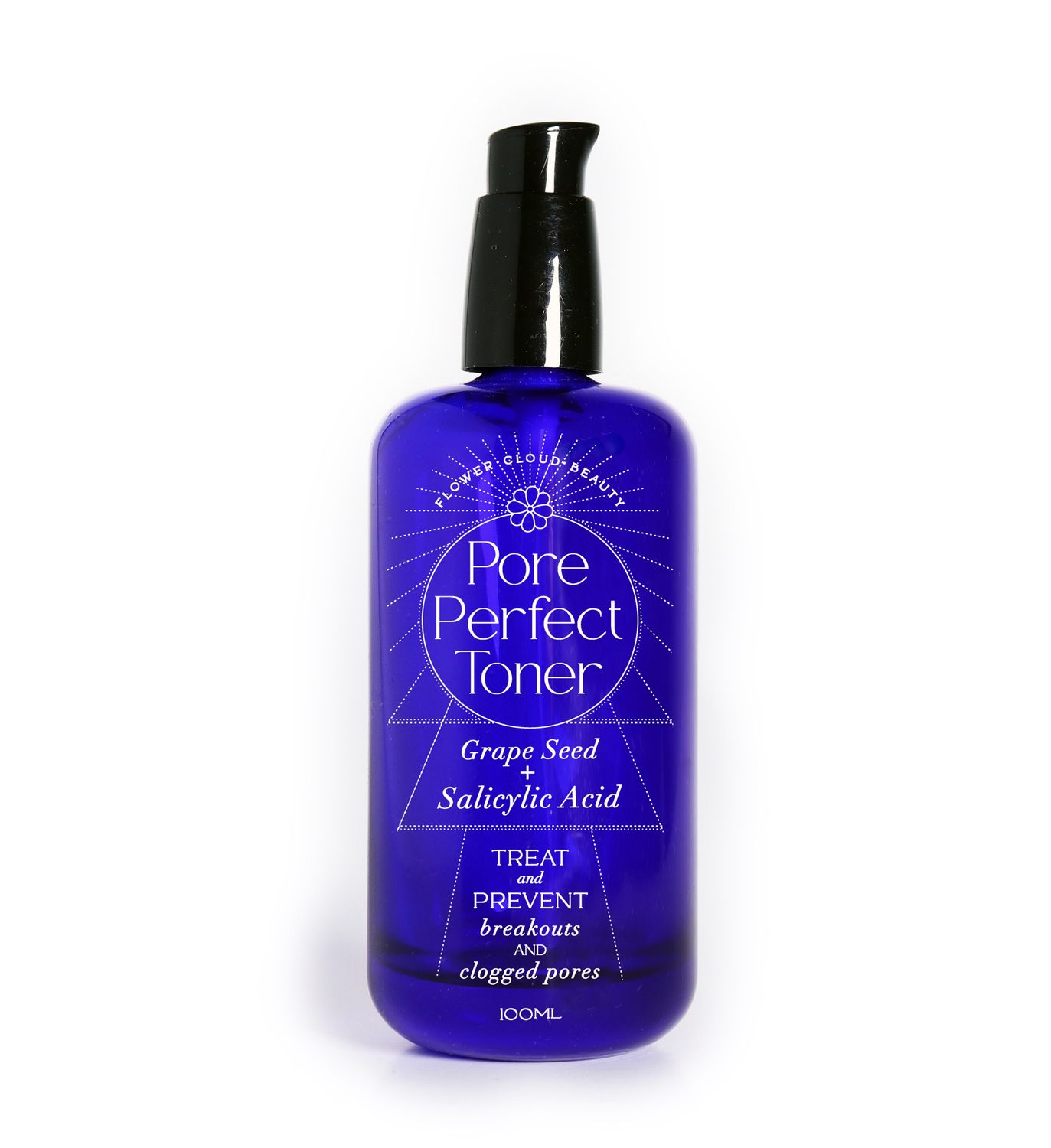all about salicylic acid
Salicylic Acid: The Pore-Purifying Powerhouse
When it comes to fighting acne and banishing blackheads, one ingredient has consistently proven its worth for decades: salicylic acid. A staple in dermatologists' offices and medicine cabinets worldwide, this beta-hydroxy acid (BHA) is uniquely equipped to dive deep into the pores and clear out the debris that leads to breakouts. But its benefits extend beyond just acne. Let's examine the science behind this dermatological workhorse.
What is Salicylic Acid?
Salicylic acid is a beta-hydroxy acid (BHA) derived from willow bark. Its chemical structure is what sets it apart from alpha-hydroxy acids (AHAs) like glycolic and mandelic acid.
Salicylic acid is lipophilic, meaning it is oil-soluble. This allows it to dissolve and penetrate into the oily environment of pores and hair follicles, something water-soluble AHAs cannot do as effectively. This unique ability makes it the go-to ingredient for targeting comedones (clogged pores) and inflammatory acne.
The Science-Backed Benefits
The efficacy of salicylic acid is supported by a robust body of clinical research, solidifying its status as a first-line treatment for acne and other skin concerns.
1. Acne Treatment and Comedolysis
Salicylic acid’s primary mechanism of action is comedolysis—the breaking down and prevention of comedones (blackheads and whiteheads). It works by loosening and dissolving the keratin plugs and excess sebum that clog pores.
A comprehensive review in the Journal of Clinical and Aesthetic Dermatology confirms that salicylic acid peels are effective in reducing both inflammatory and non-inflammatory acne lesions. The study highlights its ability to exfoliate inside the follicle and decrease comedogenicity, making it a cornerstone of acne management [1].
2. Anti-Inflammatory Properties
Beyond its exfoliating action, salicylic acid is a well-known anti-inflammatory agent. This is why it's so effective at reducing the redness and swelling associated with inflammatory papules and pustules.
Its anti-inflammatory properties are linked to its relationship to aspirin (acetylsalicylic acid). Research has shown it can help modulate inflammatory pathways in the skin, calming existing breakouts [2].
3. Treatment of Seborrheic Dermatitis and Dandruff
The same keratolytic and anti-inflammatory properties that make it effective for acne also make salicylic acid a valuable treatment for seborrheic dermatitis and dandruff. It helps break down and remove the flaky, scaly patches associated with these conditions.
Topical formulations containing salicylic acid are commonly recommended to help lift and remove scales from the scalp and skin before other medicated treatments are applied [3].
4. Enhancement of Skin Penetration
An often-overlooked benefit of salicylic acid is its ability to enhance the penetration of other topical medications. By breaking down the outer layer of the skin, it can help other active ingredients, such as antibiotics or retinoids, absorb more effectively, potentially increasing their efficacy.
Salicylic Acid vs. Other Acids
· vs. Glycolic Acid (AHA):
Glycolic acid is water-soluble and works primarily on the skin's surface to exfoliate and improve texture and tone. Salicylic acid is oil-soluble and works inside the pore to clear blockages.
· vs. Lactic Acid (AHA):
Lactic acid is a gentle, hydrating exfoliant great for surface dryness and sensitivity. Salicylic acid is more targeted for oily, acne-prone skin.
· vs. Mandelic Acid (AHA):
Mandelic acid is a larger molecule that offers gentle surface exfoliation and has antibacterial properties. Salicylic acid is more specifically focused on deep pore penetration.
They are not mutually exclusive; many skincare regimens successfully combine AHAs for surface concerns and BHAs for pore concerns.
How to Incorporate Salicylic Acid Into Your Routine
Salicylic acid is available in many forms:
· Leave-on products: Cleansers, toners (like our Pore Perfect Toner), spot treatments, and serums (typically 0.5% - 2% concentration for over-the-counter products).
· Professional Peels: In-office treatments (often 20-30% concentration) for more severe acne or oiliness, performed by a licensed professional.
Tips for Use:
· Start Slowly: If you have sensitive skin, begin with a cleanser or low-dose product every other day to assess tolerance.
· Target Problem Areas: It can be used all over the face or as a targeted spot treatment on active breakouts.
· Moisturize: While salicylic acid is less drying than some acne treatments like benzoyl peroxide, it can still cause dryness or peeling. Follow up with a non-comedogenic moisturizer.
· Sunscreen is Essential: As with any exfoliating acid, salicylic acid can increase sun sensitivity. Daily use of a broad-spectrum sunscreen is crucial.
The Bottom Line
Salicylic acid is far more than a simple acne treatment. It is a multi-functional agent with proven comedolytic, anti-inflammatory, and keratolytic properties, backed by decades of dermatological science. Its unique oil-soluble nature allows it to target the root cause of acne—clogged pores—making it an indispensable tool for anyone managing oily, acne-prone skin.
---
References
[1] Arif, T. (2015). Salicylic acid as a peeling agent: a comprehensive review. Clinical, Cosmetic and Investigational Dermatology, 8, 455–461. [This review article provides a comprehensive overview of the clinical applications and efficacy of salicylic acid peels, particularly for acne and photoaging.]
[2] Madan, R. K., & Levitt, J. (2014). A review of toxicity from topical salicylic acid preparations. Journal of the American Academy of Dermatology, 70(4), 788–792. [While this review focuses on toxicity, it thoroughly details the pharmacokinetics, mechanisms of action, and widespread use of salicylic acid, confirming its anti-inflammatory properties.]
[3] Clark, G. W., Pope, S. M., & Jaboori, K. A. (2015). Diagnosis and treatment of seborrheic dermatitis. American Family Physician, 91(3), 185-190. [This clinical guide for physicians lists salicylic acid as a key treatment option for its keratolytic effect in managing the scales associated with seborrheic dermatitis.]
Disclaimer: This blog post is for informational purposes only and does not constitute medical advice. Always consult with a dermatologist or healthcare provider before starting any new skincare treatment.
Refine by
Powered by Lightspeed
Display prices in:USD

